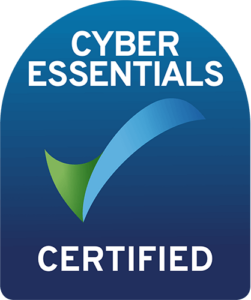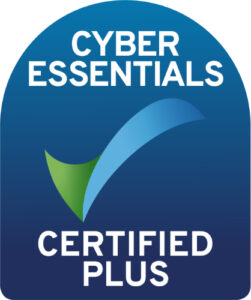Thinc insights
A successful finance or ERP system implementation starts with understanding exactly what your business needs. Here’s how to focus on what matters most.
A finance or ERP system implementation can feel like a complex undertaking, but one simple thing is true: it starts and ends with what your business requires.
When helping SMEs in choosing ERP and finance software, we begin by establishing what those core requirements are. There are three steps: pinpointing your challenges, defining your objectives, and ultimately mapping your requirements.
Let’s take a look at what each of these steps entail. If you’d like to discuss how we can help you with this process, our team is ready to chat with you.
Before choosing ERP or finance solutions, you should pinpoint your team’s current pain points. Consider challenges from an organisational level, not just from the perspective of your particular department. This ensures your motivators to change are connected to the organisation, which makes the transition much easier.
To map your challenges, start with a list from your own perspective. Get started by considering the following questions:
For each challenge, identify the negative impact from the perspectives of time, cost and lost opportunity. For example, a difficult consolidation process might cause delayed reports, costly errors and late nights for your team.
Then, talk to your team, your co-workers and leaders in other departments. Every department has different needs to the yours, so considering each perspective will give you a holistic view of your organisation’s needs.
When Thinc’s consultants are guiding our clients through this stage, we conduct an in-depth discovery session. This produces a detailed view of what’s needed from your new system. Here’s an example list of what might come up for an SME seeking a new finance or ERP solution.
Investing in a finance or ERP system implementation demands time and budget, so it’s crucial to demonstrate how it supports your organisation’s objectives.
Start by identifying where your business processes fall short and map these challenges to your organisation’s ambitions. For example, if your organisation aims to achieve a specific revenue goal but your current system doesn’t support accurate forecasting, this gap could jeopardise the objective.
| Organisation-level objectives | Team-specific objectives |
| Strategic targets like revenue growth or market expansion. Work with your leadership team to map these objectives.
Example: Acquire new organisation in EMEA in mid-next year, and have it contribute 10% to revenue by mid-year after. |
Tactical goals and milestones for your business system supporting the broader organisational objectives.
Example: Implement a multi-entity management system to integrate and consolidate data across all entities by Q4 next year. |
To prioritise objectives, assess their impact on your organisation’s bottom line. For instance, addressing consolidation errors may take precedence over delivering real-time sales reports due to higher potential risks. Prioritising objectives will shape your system requirements, budget, and implementation timeline.
With your challenges and objectives mapped, you can establish what you need most from your system. Doing this effectively means you need to clearly define your current ways of working.
Here’s how we recommend mapping your requirements: by your systems, your team, your resources and your budget.
Documentation. Document each system, its primary function and how it supports your workflows. Include any homegrown or niche systems your team uses.
Integrations. Determine which systems should integrate with your platform to streamline operations. Many finance and ERP systems are built to connect with third-party platforms, making integration planning essential.
Retirement. Highlight systems that will become redundant after implementation. For example, manual reconciliation tools may no longer be needed with your new system’s automation capabilities.
Roles. Create a list of your current team members and their primary responsibilities. Include stakeholders outside the team, like department heads, who may need access to reports or approvals.
Needs. Define who will need access to your platform and at what level. For example:
Future-proof. Consider future changes in team roles or your organisation’s direction, to ensure the platform meets your future needs.
Define a realistic budget for the solution with your prioritised requirements in mind. Factor in:
Next, determine the roles and capacity needed from your internal team for the project. You’ll need:
To create a realistic implementation timeline, you need to prioritise your requirements. Focus on the most essential requirements at first – additional capabilities can be added in future iterations. Focus on those needs that are most in line with your most mission-critical objectives.
| Example requirements | Example priority |
| Expense management | Low |
| CRM integration | Medium |
| Multi-entity management | High |
| Accounts payable | High |
Once you’ve prioritised your requirements for choosing ERP or finance solutions, draw up a checklist to ensure these are front of mind as you weigh up your options.
Now that you have a clear list of your requirements, it’s time to start considering which solutions have the capabilities to deliver for you.
Much depends on whether you’re looking a solution that’s built on best-in-class financial capabilities, like Sage Intacct, or an out-and-out ERP solution for SMEs, such as Sage 200 or SAP Business One. At Thinc, we find that a clear understanding of requirements makes it far simpler to decide which system is the right fit.
If all of this seems overwhelming, don’t worry – you’re not alone. Lots of SMEs find embarking on a finance or ERP system implementation project to be a lot to take in. Ultimately, it starts with your business and what will make life easier for your people, stakeholders and customers.
If you’d like a hand, we’re here for you. In a discovery session, we’ll help map your requirements comprehensively, giving you a clear list of priorities and next steps. If you’re ready to begin this first part of your journey, then get in touch.
Related Topics
Let's set out your business tech requirements


Enter your details into the contact form below, and one of our experts will be in touch to arrange a time to speak.
If you’re an existing customer looking for support, please e-mail servicedesk@wearethinc.com, or visit our support page where you can download our remote support apps.